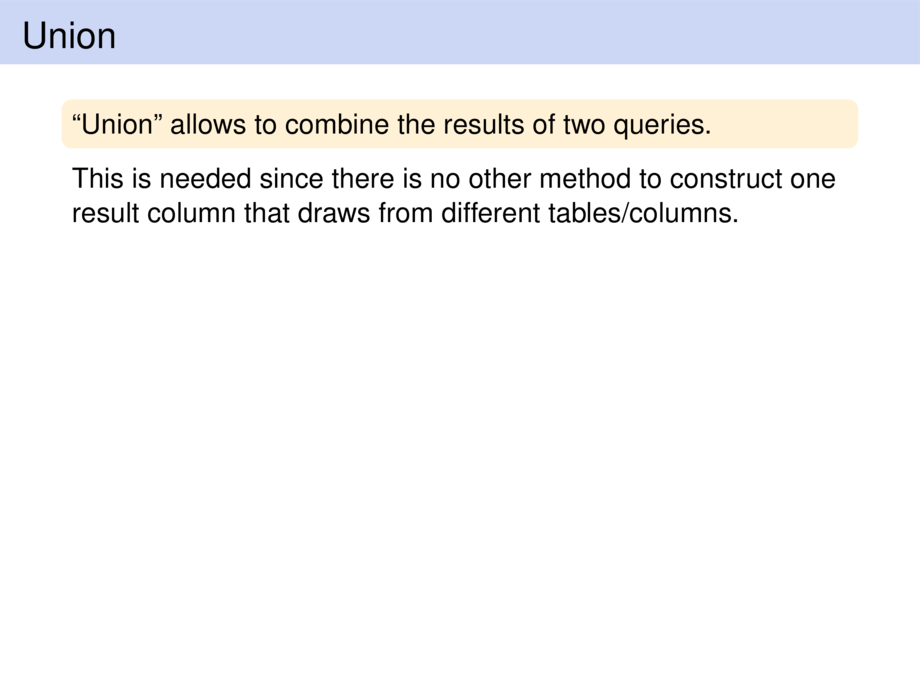



































































































177/224
\begin{frame}
\frametitle{Union}
\begin{goal}{}
``Union'' allows to combine the results of two queries.
\end{goal}
This is needed since there is no other method to
construct one result column that draws from different
tables/columns.
\pause\medskip
\begin{goal}{}
``Union'' is necessary, for example, if specialisations of a concept
(``subclasses'') are stored in separate tables.
\end{goal}
\begin{exampleblock}{}
For instance, if we have tables
\begin{itemize}
\item \sql{graduate\_courses} and
\item \sql{undergraduate\_courses}
\end{itemize}
both of which are specialisations of the concept \sql{course}.
\end{exampleblock}
\pause\medskip
\begin{goal}{}
``Union'' is also commonly used for \emph{case analysis}
(cf., the $\sql{if}\ldots\sql{then}\ldots$ cascades in
programming languages).
\end{goal}
\end{frame}

